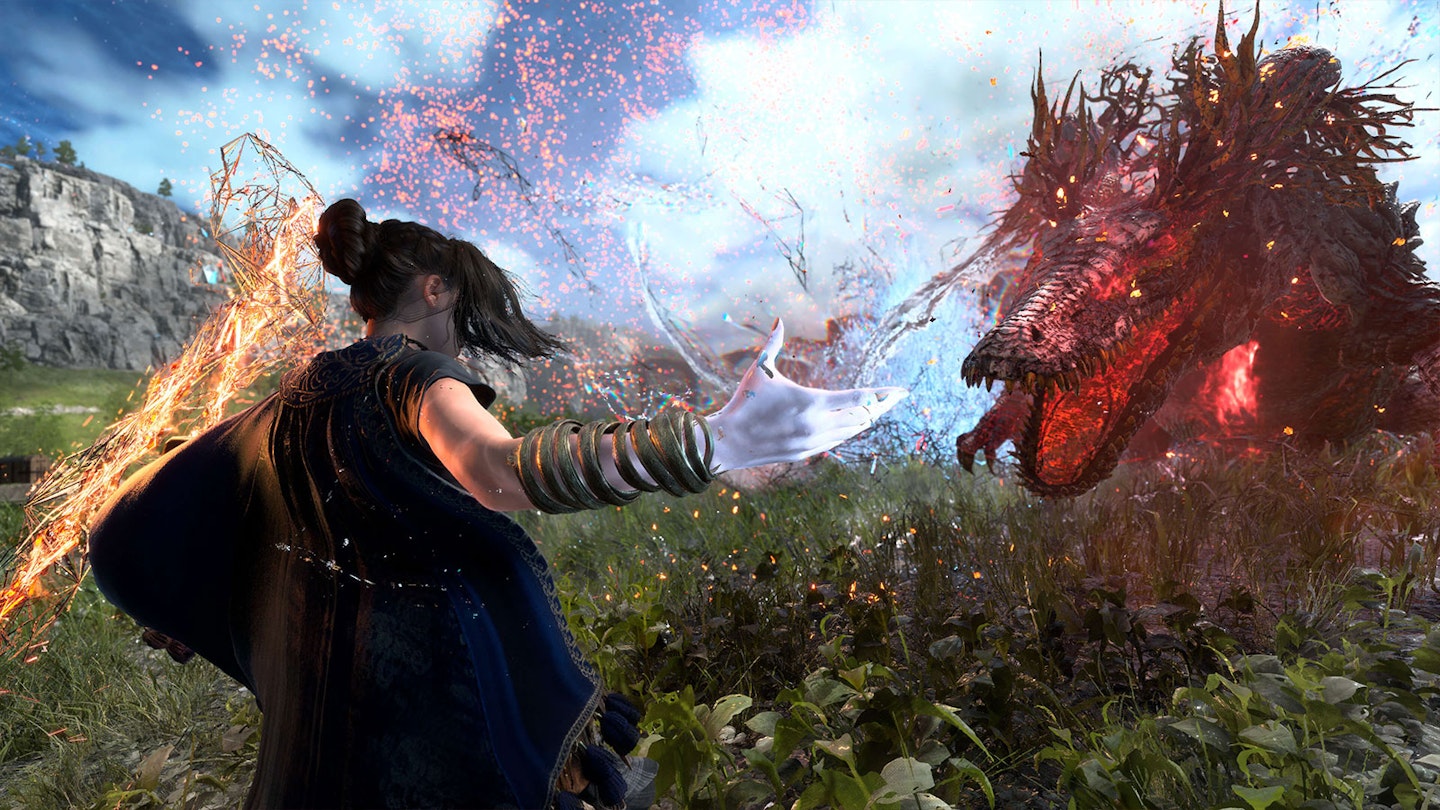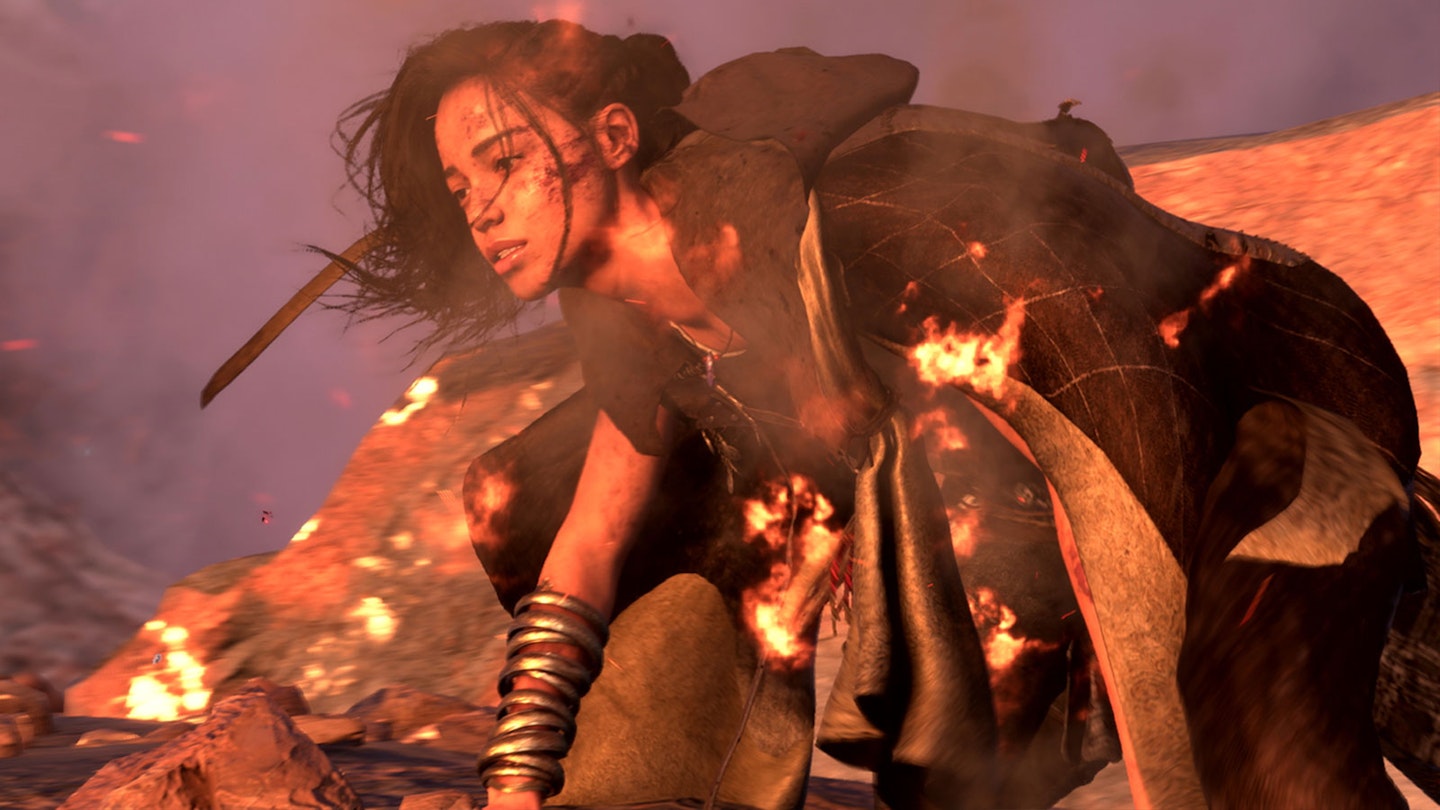Platforms: PS5, PC
Stop us if you’ve heard this one before: modern day outsider gets mysteriously transported to fantasy world, where, after an archetypal hero’s journey, they turn out to be the last hope for an imperilled people.
In Forspoken, the outsider is Alfre ‘Frey’ Holland, abandoned as a baby in New York City. Now a young adult who too often finds herself on the wrong side of the law, Frey dreams of escaping to somewhere calmer and quieter. When she discovers a strange, glowing armlet in a derelict building, she almost gets her wish – but instead of somewhere in the American Midwest, Frey finds herself in the blighted world of Athia, where a horrific affliction called the Break has destroyed or corrupted everything but the city of Cipal, humanity’s last bastion. Finding herself both immune to the Break and somehow possessed of magical abilities, the reluctant Frey is guided by Cuff – the gauntlet, now sentient and overly chatty – into uncovering the origins of the Break while searching for a way home.
Yes, the toys in Forspoken’s playset are well-worn, but are at least arranged into a compelling diorama in developer Luminous Productions new action RPG. As the team responsible for Final Fantasy XV, it’s no surprise to find that game’s speedy combat echoed in Forspoken, but here it’s elevated by a heavy emphasis on parkour and an open world that allows players to make full use of the space in battles.

It's a balance that proves not just a delight but an increasingly sublime one as you progress. In the earliest sections of the game, particularly some sections in New York, Frey feels positively clunky, but as her skills grow in Athia, she becomes a lightning-fast blur of arcane might. While her magically-enhanced parkour skills are primarily useful in navigating the world, canny use of her vaults, flips, and dodges in battle will have you juggling hordes of enemies with ease. The first time you encounter a swarm of Breakzombies – humans warped by the Break, turned into semi-crystalline shamblers – turns from a moment of panic to one of glee as you find yourself able to almost pirouette through the horde as you dispatch them.
Frey’s combat magic is split into four colour-coded categories, unlocked as you progress through the story. Each offers its own progression tree of skills to enhance, balanced between attack and support spells. Much of Frey’s arsenal is long-range focused, and even when a melee skill becomes available several hours in, _Forspoken’s_gameplay feels smoother and more satisfying when you’re zipping around, binding or dodging enemies, and rapid-switching between spell types to unleash hell on their Break-stricken forms from afar.
Forspoken transcends its problems thanks to its ever-evolving combat system and plenty of flexibility in character growth and modification.
There are also a host of customisation options, from cloaks and necklaces that can be upgraded with combat modifiers – such as increasing defence when you land a critical hit – or health and stat boosts, to blood rune nail art patterns (yes, really) that enhances Frey’s abilities. Rather brilliantly, while each cloak and necklace has their own base attributes, they can be imbued with any three skill modifiers you’ve found, making for an almost infinitely customisable array of equipment. The downside is that tracking down the necessary elements for these upgrades can be a bit of a grind, but players who do so will be well rewarded.
You’ve probably already seen a host of memes floating around the internet poking fun at Forspoken’s dialogue, and while some admittedly does sound poor out of context, in context much of it works. Frey is a contemporary New Yorker trapped in a world that even she recognises as something of a fantasy cliché, and her observations and commentary line up with that. Yes, that could be written off as an attempt on Luminous Productions’ part at lampshading its own shortcomings, but for the most part Frey’s reactions feel authentic given her unlikely situation. Cuff, meanwhile, is a haughty, snooty figure despite being an elaborate piece of wrist-wear, so his often condescending tone and frequently snippy lines also fit. At Forspoken’s worst, some of Frey’s argumentative ‘banter’ with Cuff while exploring Athia does grate – mainly due to the repetition rate of those lines – but at its best, the dialogue rings true for personalities and situations. Is Forspoken likely to win an Oscar for Best Original Screenplay? No. Is it as awful as certain people on Twitter make out? Also no.

Forspoken’s biggest problem is instead its emptiness. While Athia is beautiful – extremely beautiful, in fact, especially with ray-tracing active on PS5 – it’s also barren, with no pockets of civilisation to visit among the wastes. While that’s narratively consistent with the impact of the Break and the refugee status of the few survivors who made it to Cipal (which becomes the hub, and where Frey will complete most of the game’s side quests, fittingly dubbed “Detours”), for players it means a vast open world but not much to do in it. Exploring for exploration’s sake is only so rewarding, and while there are plenty of treasure chests to hunt down for resources, or monuments to uncover for stat power-ups, Frey is never so underpowered that you’ll feel a burning need to trek to the other side of the map for the sake of a +5 boost to defence.
This isn’t helped by the fact that much of the open world is artificially cordoned off with conveniently vertiginous mountains or chasms too wide for Frey to cross until the game wants you to. While these can eventually be passed as Frey matures into her powers, the approach feels frustrating for those who do want to just run the opposite direction of a quest marker, but find they’re locked out of exploration pending upgrades. The result is something halfway between open world and Metroidvania, without committing enough to either style to satisfy.
It also suffers from some truly awful stealth sections. Or perhaps attempts at stealth sections is more accurate – in New York and Athia alike, there are several moments where Frey has to avoid enemies, but they’re always bafflingly brief, essentially forcing players to move a crouched Frey around for a few seconds before the next bit of cinematic comes along. Always jarring for their pacing and placement, despite their brevity, they feel like a half-abandoned idea that should have been fully jettisoned in the game’s planning stages.
Forspoken is far from devoid of problems, then, but it comfortably transcends them thanks to its ever-evolving combat system and plenty of flexibility in character growth and modification. Despite the textbook high fantasy setting and somewhat clichéd journey for Frey, only the most cynical player won’t enjoy their time in Athia.
